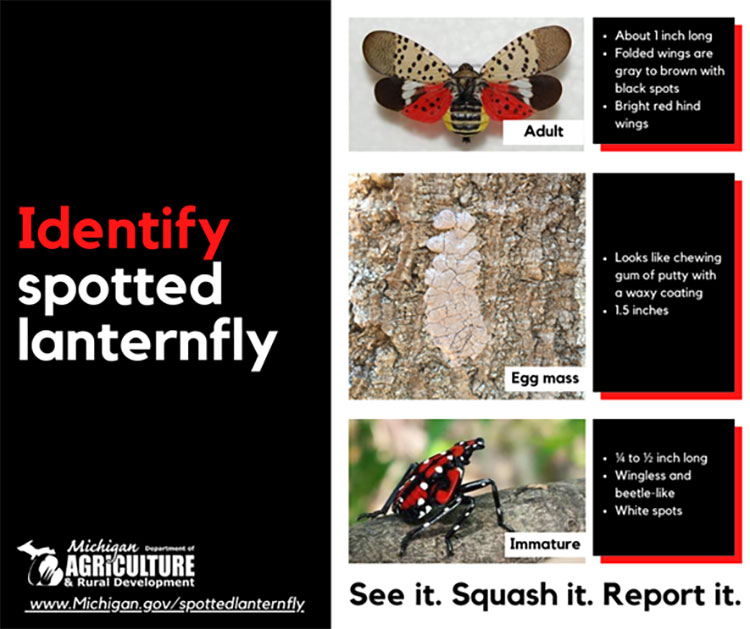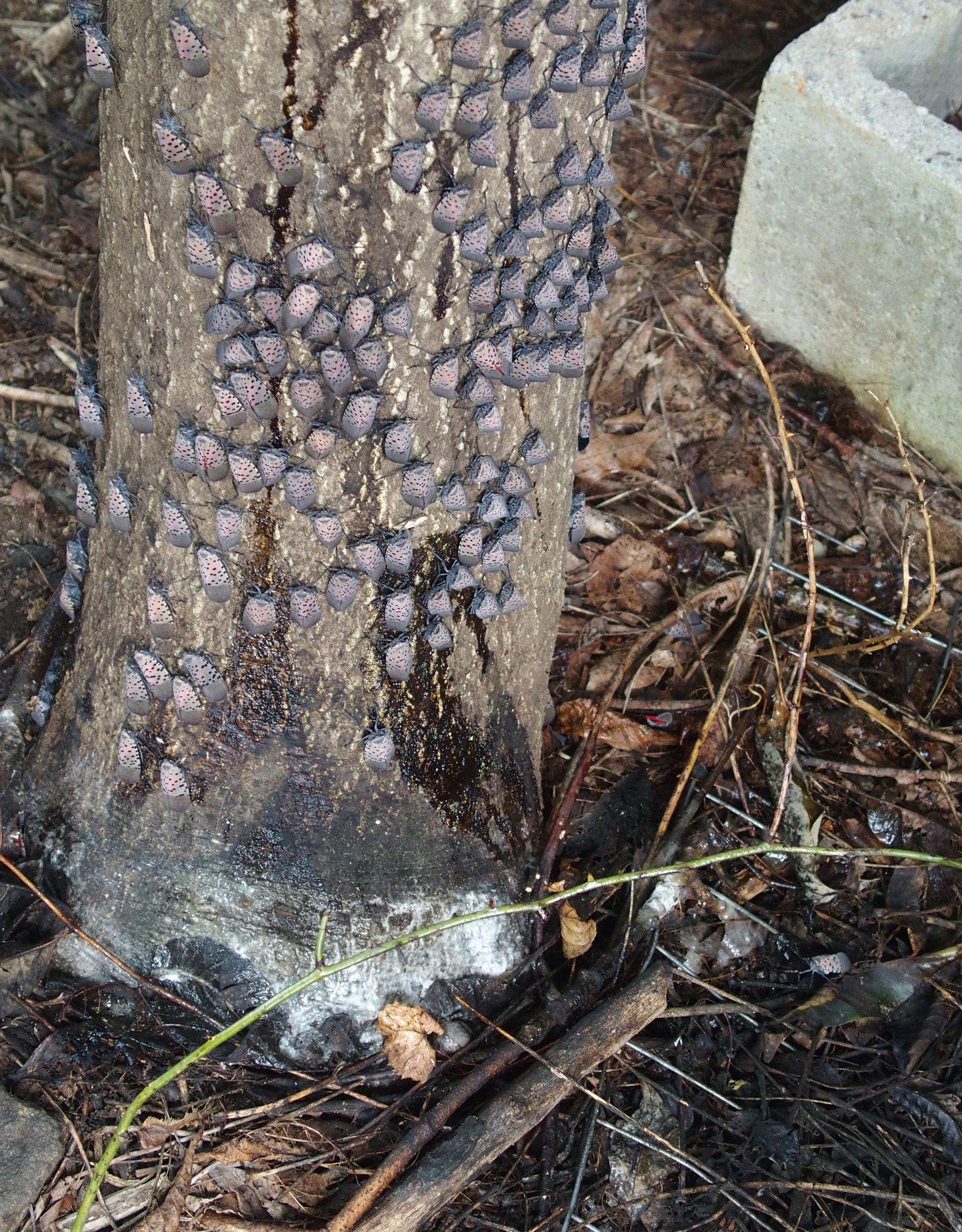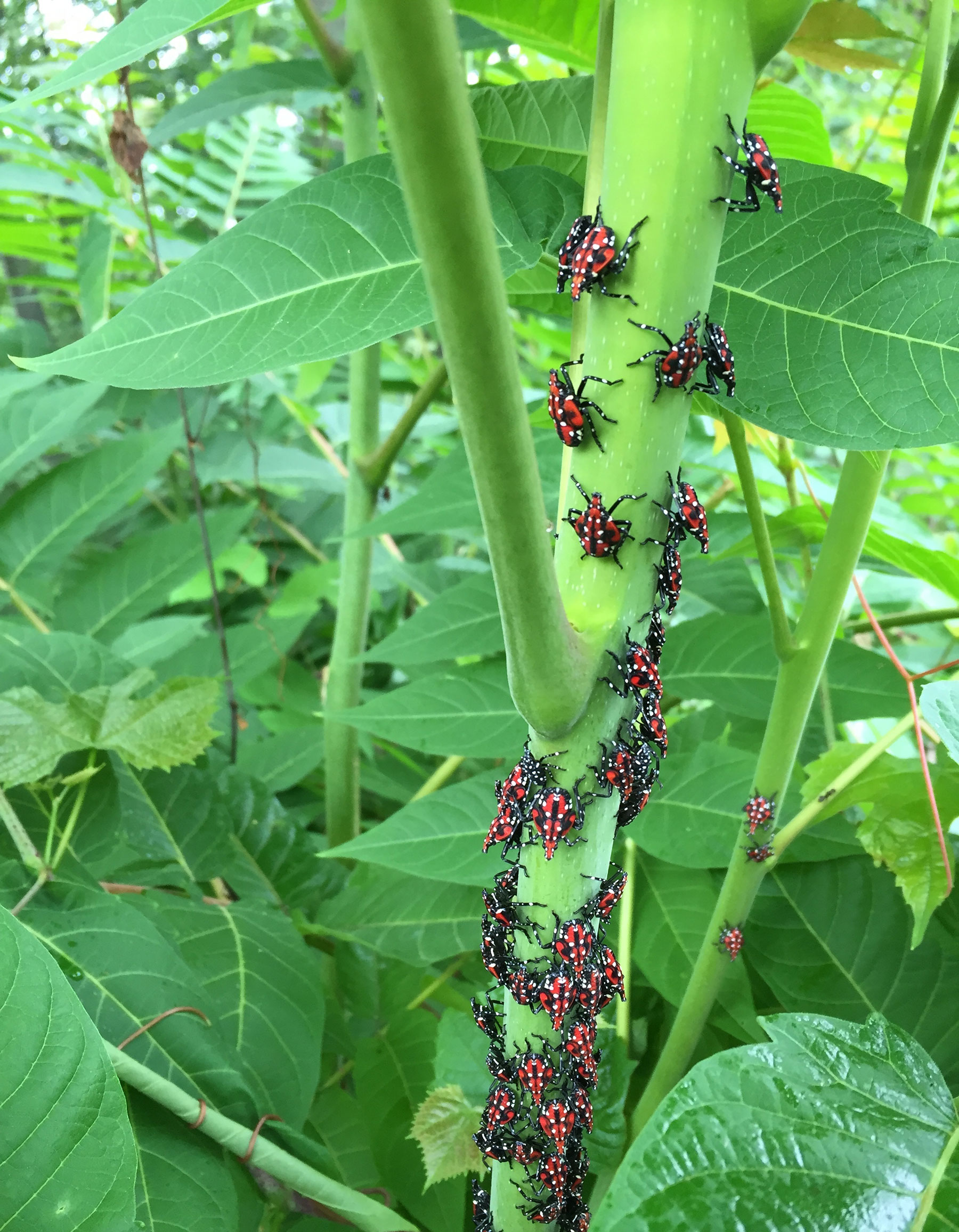The invasive and non-native spotted lanternfly has turned up in Michigan again, according to the Michigan Department of Agriculture and Rural Development.
Two detections have been made this year. USDA on June 17 confirmed a small population of juvenile spotted lanternflies in Lamberville, Mich.
A second detection was made June 24 in Monroe County, when the pest was found in monitoring traps deployed by Michigan State University, as part of collaborative survey initiatives with MSU, MDARD and USDA.
Spotted lanternfly (Lycorma delicatula), first found in Pontiac, Mich., in 2022, is a threat to the state’s fruit and forest industries. It is an invasive planthopper that feeds on a wide range of plants, including grapes, hops, stone fruits and hardwood trees.
When the spotted lanternfly feeds, it excretes a sticky, sugary fluid that causes sooty mold, which can further damage plants. Its preferred host is tree of heaven (Ailanthus altissima), but it also feeds on a wide range of plants, including grapevines and trees such as black walnut, river birch, willow, sumac and red maple.

It was initially discovered in Pennsylvania in 2014. Today, 17 states have some degree of infestation, including Connecticut, Delaware, Illinois, Indiana, Kentucky, Maryland, Massachusetts, Michigan, New Jersey, New York, North Carolina, Ohio, Pennsylvania, Rhode Island, Tennessee, Virginia and West Virginia.
“MDARD is working with the Michigan Department of Natural Resources, USDA, and Cooperative Invasive Species Management Areas to determine the scope of the infestation,” says Steve Carlson, MDARD's Pesticide and Plant Pest Management Division director. "We are currently in the assessment stage of response and will use the data we collect in the field to determine an appropriate response."
Prevention and early detection are vital to limiting the spread of spotted lanternfly, MDARD says. If someone comes across a spotted lanternfly egg mass, nymph or adult, MDARD says to take one or more photos; make note of the date, time and location of the sighting; and report it online to Eyes in the Field.
Spotted lanternfly has various life stages. Juveniles, known as nymphs, which resemble small, wingless black to red beetles with white spots, are found in the early summer, with adults — characterized by gray to brown outer wings with black spots — emerging in late summer.
The spotted lanternfly, not known to bite humans, is a hitchhiking pest native to Asia. It lays its eggs on any hard surface. including grills, vehicles, trailers, firewood, outdoor furniture, bikes and toys.

What can you do?
Everyone can help prevent the spread of spotted lanternfly, MDARD says. Remember to "See it. Squish it. Report it." Here are some other tips:
Check your vehicle. Before leaving a parking lot or worksite, inspect vehicles for spotted lanternfly egg or insects. Check doors, sides, bumpers, wheel wells, grills and roofs. Destroy any eggs or insects you find.
Park with windows closed. The spotted lanternfly and its nymphs can enter vehicles unsuspectedly. When parked, make sure to keep windows closed.
Remove and destroy pests. Crush nymphs and adult insects. Scrape egg masses into a plastic bag containing hand sanitizer or rubbing alcohol to kill them.
Report sightings. Send in reports with photos to Eyes in the Field. Photos are necessary to verify a report and to aid in identification.

Not sure if you've found a spotted lanternfly? Check out the spotted lanternfly lookalikes guide and browse photo galleries on Flickr.
For additional information on identifying or reporting spotted lanternfly, visit michigan.gov/spottedlanternfly, or learn more at USDA's spotted lanternfly website.